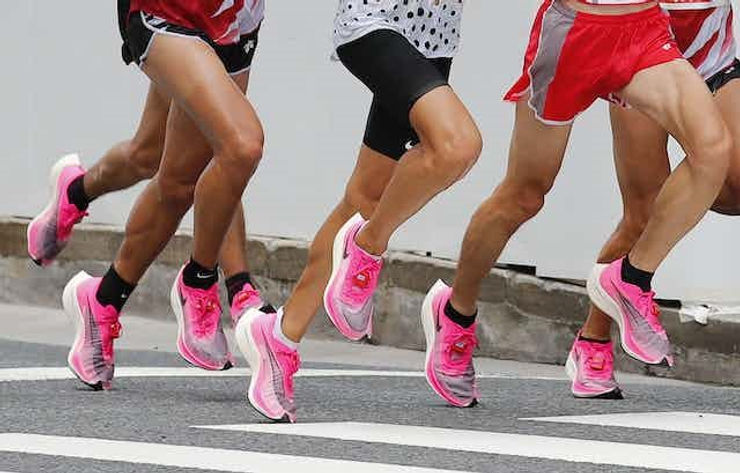By: Annabelle Ma
This spring, the University of Washington had eight people that ran a mile in under than four minutes. Three records were broken in Paris in June this year. Faith Kipyegon from Kenya set a new record in the women’s 1,500 meters and 5,000 meters, and Lamecha Girma from Ethiopia broke the world record in the men’s 3,000-meter steeplechase (an obstacle course in athletics).
The big reason behind all these records is the development of new technologies. Super shoes have been a recent hit all around the world. Their thick, springy shoes help give runners higher rebound energy with each step.
Super shoes were first developed in 2016 when Nike made the Zoom Vaporfly 4% that was noticeably faster than other shoes from that time. Because of this, World Athletics, the governing body of track and field, had to limit the height of a shoe’s midsole in 2020. Now all the major companies are making super shoes, and thousands of everyday runners wear them.
Lindsay Flanagan, who has a personal best marathon time of 2:24:43, will be participating in the World Championships marathon in August.
“Since I’m going to be wearing super shoes in races, I want to get a good feel for them in training,” Flanagan said. “I’ve found that I can log more quality days, as well as more mileage in general, because my legs come around sooner.”
Some professional runners don’t train in super shoes to build up their strength when wearing traditional shoes. According to a study by California State University, East Bay, those who wore traditional racing flats complained of more muscle pain, but also improved more in running economy than those in super shoes.
As good as super shoes may seem, they also have a significant flaw. Adam Tenforde and Amol Saxena, experts studying running injuries, believe that super shoes can lead to serious ailments. In February, they presented five case studies of bone injuries that came from using super shoes in the journal Sports Medicine.
Even if super shoes cause severe bone injuries, though, most athletes believe that the benefits outweigh the flaw. “The big benefit for me is that I recover faster in super shoes,” said Bill Salazar, a 77-year-old runner who ran a 4:22 marathon in Berlin last September.
Many top runners reported that super shoes make them finish faster because their leg muscles are less tired than with traditional shoes. Kelvin Kiptum, a Kenyan runner, used super shoes when he was running the marathon. He ended up running the second half of the marathon faster than the first half!
Source: https://www.nytimes.com/2023/07/22/sports/super-shoes-training.html











